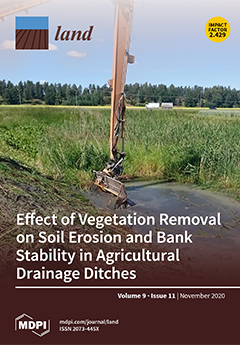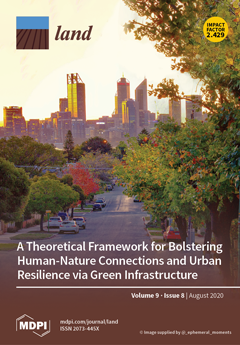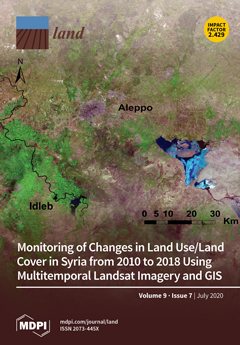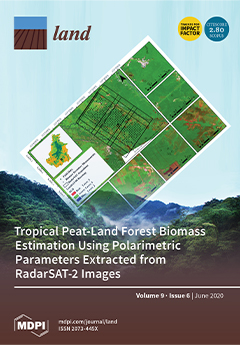This study explores how knowledge was and is mobilized to advance the objectives of the Beaver Hills Biosphere Reserve, located in Alberta, Canada. Established in 2016, a 12-year collaborative effort worked to establish the biosphere reserve and achieve formal UNESCO designation. Subsequent…
The landscape context (i.e., anthropogenic setting) of forest change partly determines the social-ecological outcomes of the change. Furthermore, forest change occurs within, is constrained by, and contributes to a dynamic landscape context. We illustrate how information about local landscape…
The Huerta is recognised as one of the 13 specific agricultural landscapes in Europe, present in only three Mediterranean countries, namely Spain, Italy, and Greece. In the case of Spain, three areas fall within the established Huerta agricultural classification: the Huertas de Valencia, Murcia…
This paper describes how knowledge mobilization evolved during a study that assessed a proposed increase in industrial water withdrawals from the Athabasca River in northern Alberta, Canada, and potential impacts on a suite of freshwater semi-aquatic mammals in the broader ecosystem. The oil…
Inclusive knowledge systems that engage local perspectives and social and natural sciences are difficult to generate and infuse into decision-making processes but are critical for conservation planning. This paper explores local tacit knowledge application to identify wildlife locations,…
In the face of ongoing habitat loss and fragmentation, maintaining an adequate level of landscape connectivity is needed to both encourage dispersal between habitat patches and to reduce the extinction risk of fragmented wildlife populations. In a developing region of southwestern Ontario,…
The creation of Transboundary Biosphere Reserves (TBRs) is one of the most outstanding contributions of the United Nations Educational, Scientific, and Cultural Organization (UNESCO) Man and Biosphere Programme (MAB). Recent revisions have shown that there is a gap between its biodiversity…
The surrounding landscape of ancient Pergamon is characterized by several mountain ranges, the Bakırçay Valley and River and the Aegean coastline. The accessibility of this region was vital for the city since it provided food and resources as well as trade, communication and military movements,…
Historic urban landscapes (HULs) are composed of layers of history and memories that are embedded in physical monuments, buildings, and memorials. Physical built fabric stores both personal and cultural memory through long association with communities. Rapid changes due to demolition and…
Forest conversion to agriculture can induce the loss of hydrologic functions linked to infiltration. Infiltration-friendly agroforestry land uses minimize this loss. Our assessment of forest-derived land uses in the Rejoso Watershed on the slopes of the Bromo volcano in East Java (Indonesia)…
Pan evapotranspiration (E) is an important physical parameter in agricultural water resources research. Many climatic factors affect E, and one of the essential challenges is to model or predict E utilizing limited climatic parameters. In this study, the performance of four different artificial…
The ongoing global deforestation resulting from anthropogenic activities such as unsustainable agriculture and surface mining threatens biodiversity and decreases both soil carbon and above-ground biomass stocks. In this study, we assessed soil properties and below- and above-ground biomass…






